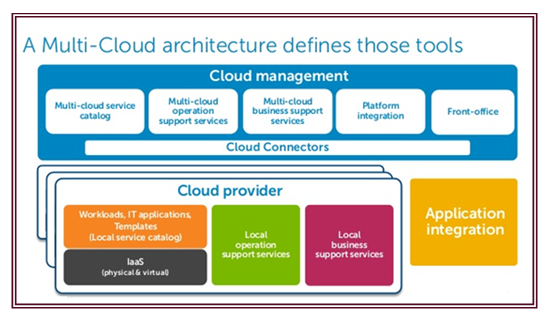Multi Cloud is the use of multiple cloud computing services in a single heterogeneous architecture. Organizations typically opt for a multi-cloud approach, where it can offer the hardware, software and infrastructure redundancy necessary to optimize fault tolerance. It can also be used to manage your traffic from different customers across the fastest possible networks.
This is different from the Hybrid Cloud environment where a mix of on-premises, private cloud and third-party public cloud services such as Amazon or Azure, work in close collaboration between the platforms.
Multi Cloud Benefits
- Redundancy, Scalability and High Availability – Incorporating a Multi-cloud strategy means committing to use two or more cloud services to minimize the risk of widespread data loss or downtime due to a localized component failure in a cloud computing environment. Such a failure can occur in hardware, software, or infrastructure.
- Autonomy – The ability to deploy your applications on different cloud providers has the clear advantage of reducing dependency on a single vendor (referred to as “vendor lock-in”). Here it becomes difficult to meet the needs of diverse partners and customers. This increases the overall enterprise performance as there is greater flexibility in data deployment options. The workload moves between clouds as the computing needs and costs change with changing business needs.
- Facilitates Disaster recovery and business continuity in case of unforeseen events or natural disasters.
- High security across the multi cloud. Using a multi-cloud deployment model can help servers stay secure if used in consistent methods.
- Pick and choose your features – Multi cloud provides you support for multiple platforms and service providers. Each having unique features and services, you can opt for those which satisfies your business needs and requirements.
Multi Cloud Concerns
The Cloud universe is diversified into public, private and hybrid clouds. Some organizations use a public cloud to make resources available to consumers over the Internet and a private cloud to provide hosted services to a limited number of people behind a firewall. A third type of cloud, called a hybrid cloud, may be used to manage miscellaneous internal and external services.
- As organizations incorporate a mix of public, private and on-premises solutions for their application deployment and choice of cloud providers, it becomes important for them to deploy services in a consistent and repeatable way. Otherwise it will be difficult to control their IT infrastructure.
- Multi cloud integration is a main pain point for organizations. Ranging from operating systems to protocol stacks, public IaaS providers use different technologies to build and support their cloud services. This diverse environments results in minimal software portability.
- Complexity of multi-cloud. It consists of different technologies, different interfaces, different services, and different terminology. There is currently no standardization of terminology, instance sizes, or methodologies across cloud vendors.
- Choosing the wrong provider and building apps in the wrong environments can negatively affect application performance, workflows, change costs and both communication and transactions with customers.
- Accessing and maintaining security as the organization grows becomes difficult and complicated. Tracking costs and billing associated with multi cloud is difficult with the pay-per use model of the public IaaS.
- Switching between cloud environments involves consistency and a level of efficiency for managing those dissimilar environments. It could be due to better and competitive price, features, regulatory requirements, performance, or other factors.
Possible Solutions for Multi cloud concerns
There are a number of ways to work around the multi cloud concerns.
- The deployment issues can be overcome through consistency in automations. Automating most of the processes will solve the main issues of scale, speed, costs and accuracy.
- Standard architectures for setting up, connecting and consolidating maintenance functions across the series of standalone IaaS systems makes it easier to opt for a multi-cloud strategy.
- Third party cloud brokers can assess, compare prices, features and procure the suitable cloud services. They will also handle the cloud integration, management and accounting responsibilities.
- Multi cloud management tools are available that can monitor usage, performance and costs across multi-cloud environments.
- Audit and assess before an organization decides to monitor cloud services. It must first identify the specific services its employees use.
While enterprise interest in multi cloud and public IaaS continues to grow, if a proper multi-cloud management strategy isn’t in place, managing these clouds will be difficult for the IT.
Sysfore can guide you to migrate to a Multi cloud environment seamlessly. To know more, you contact us at info@sysfore.com or call us at +91-80-4110-5555.


